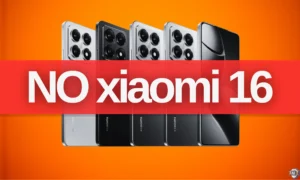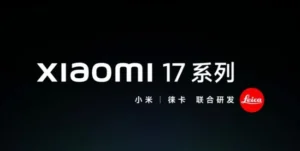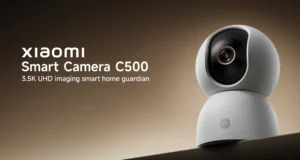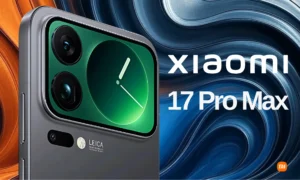Redmi & XRING O1: When Will the Chip Arrive?
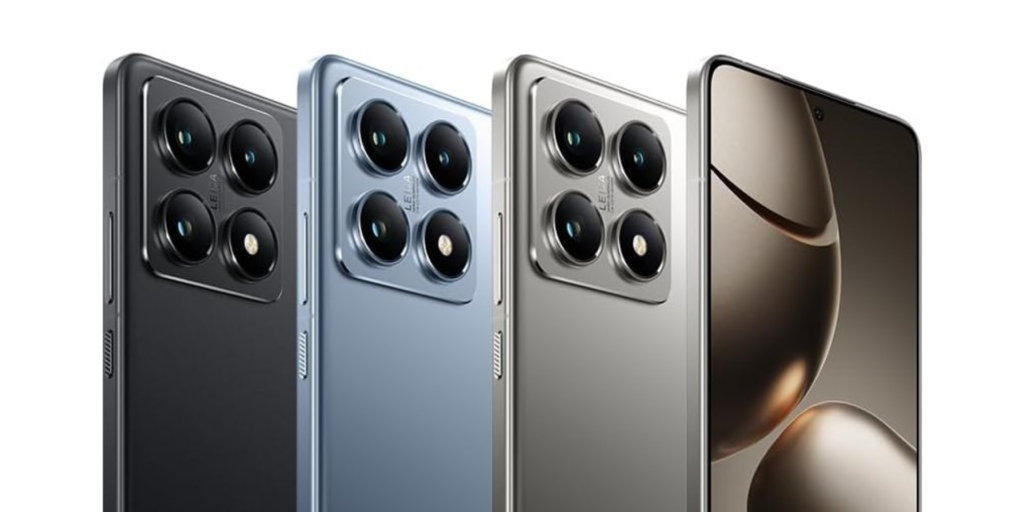
Xiaomi’s XRING O1 Chip: When Will Redmi Phones Get the Upgrade?
The launch of Xiaomi’s XRING O1, its first flagship processor, marks a significant leap towards technological independence. This powerful System-on-Chip (SoC), unveiled in May 2025, is already powering premium Xiaomi devices like the 15S Pro and Pad 7 Ultra. However, Redmi fans are eagerly awaiting its arrival in their favorite budget-friendly smartphones. This article delves into the reasons behind the delay, exploring the challenges and prospects of integrating the XRING O1 into Redmi phones, drawing upon insights from key figures at Xiaomi. We’ll examine the chip’s impressive specs, its current market presence, and what the future holds for Redmi and the XRING family of processors.

The XRING O1: A Technological Breakthrough for Xiaomi
The XRING O1 is more than just a chip; it represents Xiaomi’s ambition to reduce reliance on external suppliers like Qualcomm and MediaTek, mirroring the strategies of Apple and Huawei. Manufactured using TSMC’s advanced second-generation 3nm node, the XRING O1 boasts 19 billion transistors and a cutting-edge 10-core architecture:
- 2 x Cortex-X925 cores at 3.9 GHz: For demanding, high-performance tasks.
- 4 x Cortex-A725 cores at 3.4 GHz: Balancing power and efficiency.
- 2 x Cortex-A725 cores at 1.89 GHz + 2 x Cortex-A520 cores at 1.8 GHz: Optimized for low-power tasks.
Furthermore, the XRING O1 integrates:
- A 16-core Immortalis-G925 GPU.
- A six-core NPU capable of 44 TOPS (trillions of operations per second) for AI processing.
- A Xiaomi-developed fourth-generation ISP.
This potent combination has resulted in exceptional benchmark scores, exceeding 3 million points on AnTuTu and rivaling Qualcomm’s Snapdragon 8 Elite and Apple’s A18 Pro. Its energy efficiency, with up to 35% lower consumption during intensive tasks, and compact 109.5 mm² size make it a leader in performance-per-area, surpassing competitors like the MediaTek Dimensity 9400 (126 mm²) and Snapdragon 8 Elite (124 mm²).
The XRING O1’s development was a monumental undertaking, involving a $1.9 billion initial investment and a team of 2,500 engineers led by a former Qualcomm executive, under the direct supervision of Xiaomi CEO Lei Jun. This achievement not only solidifies Xiaomi’s position as a technological powerhouse but also holds geopolitical significance, as the chip’s design adheres to US regulations, enabling its manufacture at TSMC without sanctions.
Current Status: XRING O1 in the Premium Segment
Currently, the XRING O1 exclusively powers Xiaomi’s high-end devices, including the Xiaomi 15S Pro and Xiaomi Pad 7 Ultra, both released in May 2025. The 15S Pro, featuring a stunning 6.73-inch 2K AMOLED display (3200 nits), a 6100 mAh battery with 90W fast charging, and a triple 50MP Leica camera system, showcases the chip’s capabilities, delivering a 40% performance boost compared to its predecessors. The Pad 7 Ultra boasts a 14-inch OLED display, a massive 12,000 mAh battery, and an incredibly slim 5.1 mm profile, highlighting the XRING O1’s versatility in high-performance tablets.
Xiaomi also launched the XRING T1, a chip designed for wearables, debuting in the Xiaomi Watch S4 with eSIM and 4G connectivity, offering a 35% performance increase in mobile network operations. This strategy reflects Xiaomi’s focus on optimizing the XRING O1 within the premium segment before wider adoption.
Why Redmi Phones Don’t (Yet) Have the XRING O1
Despite the XRING O1’s impressive performance, Redmi phones, known for their exceptional value, won’t be incorporating this chip anytime soon. According to reputable leaker Digital Chat Station, and confirmed by Xiaomi’s General Manager of Marketing for China, Wang Teng, there are no current plans to include the XRING O1 in Redmi devices. The reasons are multifaceted:
- Production Cost: The substantial $1.9 billion initial investment significantly increases the per-unit cost. Redmi’s commitment to affordability (e.g., the Redmi K80 Ultra priced around $430) makes absorbing these costs untenable without compromising its value proposition.
- Technological Maturity: Xiaomi prioritizes optimizing and maturing the chip before mass implementation. This involves refining design and production to ensure stable and efficient performance across a wider range of devices.
- Market Segmentation: Xiaomi is strategically utilizing the XRING O1 to differentiate its premium offerings, while Redmi continues to leverage Qualcomm and MediaTek chips to maintain competitive pricing. The Redmi K80 Ultra, for example, likely continues its strategic, multi-year partnership with Qualcomm using a Snapdragon 8-series processor.
- Market Readiness: Implementing the XRING O1 in Redmi requires assessing market demand and ensuring large-scale production capacity. Xiaomi is proceeding cautiously to prevent supply or performance issues that could damage Redmi’s reputation.
Redmi’s Vision for 2025: Innovation Without (For Now) XRING O1
While the XRING O1 remains absent, Redmi continues its innovation push. The sub-brand maintains a strong presence in Android bestseller lists with models like the Redmi K80, Turbo 4 Pro, and Note 14 Pro, consistently topping sales charts on major retail platforms. Redmi’s 2025 plans include substantial upgrades:
- Premium Materials: Starting with the Turbo 4 Pro, Redmi has standardized metal frames in devices around the $360 price point, surpassing competitors still using plastic in this segment.
- HyperOS Optimization: Redmi devices benefit from HyperOS updates, improving hardware-software integration, unlocking advanced features, and enhancing efficiency.
- Unmatched Performance: The Redmi K80 Ultra, dubbed the “Performance King,” promises to set new standards in the mid-to-high range, even without the XRING O1.
When Will the XRING O1 Reach Redmi?
Although no concrete date exists, Xiaomi’s strategy suggests XRING O1 integration into Redmi devices might occur in 2026 or later, contingent on several factors:
- Cost Reduction: As XRING O1 production scales and per-unit costs decrease, it becomes more feasible for integration into more affordable Redmi devices.
- Expansion of the Chip Lineup: Xiaomi plans to develop an XRING processor family, potentially including more budget-friendly variants specifically tailored for the mid-range, aligning with Redmi’s goals.
- Ecosystem Maturity: Lei Jun aims to extend XRING chips to other Xiaomi devices, from wearables to smart home appliances. Once the XRING O1 consolidates in the premium segment, Xiaomi is likely to explore its implementation in Redmi to democratize the technology.
Wang Teng has emphasized a strategic, unhurried approach, ensuring the chip is fully optimized to meet Redmi users’ expectations for affordable performance. The partnership with Qualcomm ensures Redmi devices will continue to utilize high-performance Snapdragon chips (like the 8-series), maintaining competitiveness.
The Long-Term Impact: Redmi and Technological Independence
The XRING O1 signifies a new era for Xiaomi. While Redmi isn’t yet part of this revolution, its future is intrinsically linked to its parent company’s advancements. Xiaomi’s ability to design a chip rivaling market leaders on its first serious attempt showcases its transformative potential. For Redmi, this translates to even more powerful and optimized devices in the future, while maintaining its “affordable quality” philosophy.
Xiaomi’s strategy extends beyond smartphones. Projects like the Xiaomi YU7, its first electric SUV, and the expansion of the HyperOS ecosystem show the company building a comprehensive technological ecosystem where XRING chips will play a central role. This could lead to a smoother experience for Redmi users, with devices seamlessly integrating with other Xiaomi products, from smartwatches to electric vehicles.
Conclusion: Patience and Expectations
For Redmi enthusiasts anticipating the XRING O1 in their favorite devices, patience is key until Xiaomi optimizes chip costs and production. However, Xiaomi’s vision, backed by massive R&D investment and strategic focus, assures Redmi won’t lag behind. Meanwhile, 2025 releases like the Redmi K80 Ultra and Turbo 4 Pro will continue delivering exceptional performance and premium features at competitive prices.
The XRING O1 is more than a processor; it symbolizes Xiaomi’s commitment to innovation and technological independence. As the technology matures and the market adapts, Redmi fans can anticipate a future where XRING chips power their devices, elevating the user experience. For now, as Wang Teng advised, patience is needed while we eagerly follow Xiaomi and Redmi’s exciting technological advancements.
